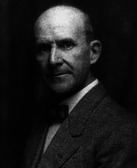13 0 229,191 64,076 24.28% 6.79% | 624,992 229,191 66.20% 24.28% Start date November 2, 1920 | |
 | ||
The 1920 United States presidential election in California took place on November 2, 1920, as part of the 1920 General Election in which all 48 states participated. California voters chose nine electors to represent them in the Electoral College via a popular vote pitting Democratic nominee James M. Cox and his running mate, Assistant Secretary of the Navy Franklin Roosevelt, against Republican challenger U.S. Senator Warren G. Harding and his running mate, Governor Calvin Coolidge.
By the beginning of 1920 skyrocketing inflation and Wilson’s focus upon his proposed League of Nations at the expense of domestic policy had helped make the incumbent President very unpopular – besides which Wilson also had major health problems that had left First Lady Edith effectively running the nation.
Political unrest observed in the Palmer Raids and the “Red Scare” further added to the unpopularity of the Democratic Party, since this global political turmoil produced considerable fear of alien revolutionaries invading the country. Demand in the West for exclusion of Asian immigrants became even stronger than it had been before. Another issue was the anti-Cox position taken by the Ku Klux Klan, and Cox’s inconsistent stance on newly-passed Prohibition – he had been a “wet” but announced he would support Prohibition enforcement in August
The West had been the chief Presidential battleground ever since the “System of 1896” emerged following that election. For this reason, Cox chose to tour the entire nation and after touring the Pacific Northwest Cox went to California to defend his proposed League of Nations. Cox argued that the League could have stopped the Asian conflicts – like the Japanese seizure of Shandong – but his apparent defence of Chinese immigrants in the Bay Area was very unpopular and large numbers of hecklers attacked the Democrat. Moreover, the only attention Cox received in the Western press was severe criticism.
In September, several opinion polls were conducted, and all predicted that California, which had been extremely close in the two preceding elections, would be carried by Harding by over one hundred thousand votes. By the end of October, although no more opinion polls had been published, most observers were even more convinced that the Republicans would take complete control of all branches of government. On election day Warren Harding carried California by a margin much larger than early polls predicted, winning with 66.20 percent of the vote to James Cox’s 24.28 percent. Harding became the first of only two presidential nominees to sweep all of Califonia’s counties – ironically the only other one was his opponent’s running mate sixteen years later.
This was the first time Mariposa County and Colusa County, the only counties in the Pacific States to support Alton B. Parker sixteen years previously, had ever voted Republican. Plumas County would never vote Republican again until Ronald Reagan in 1980, and Amador, El Dorado and Placer Counties were not carried by the Republicans again until 1952.
